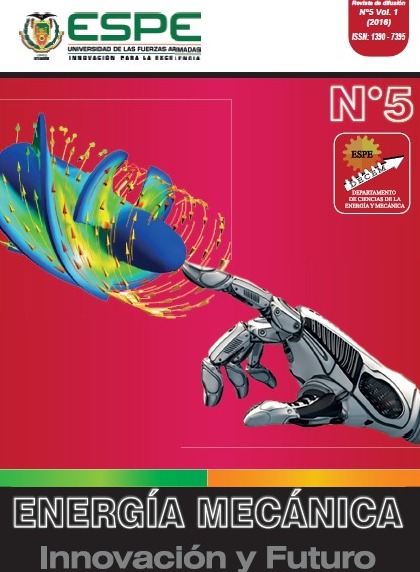INFLUENCIA DE LA FORMACIÓN DE ESCORIA ESPUMOSA BÁSICA (CaO-MgO) EN LA DISMINUCIÓN DEL CONSUMO DE ENERGÍA DE UN HORNO DE ARCO ELÉCTRICO (EAF)
DOI:
https://doi.org/10.24133/EMIF.V5.10i.3957Resumen
RESUMEN
Para el proceso productivo de una acería
resulta de suma importancia la formación
de escoria espumosa básica para disminuir
el tiempo de operación (POT) de un horno
de arco eléctrico (EAF). El presente estudio
considera que el proceso de fusión del acero
se realiza en un EAF trifásico con electrodos
de grafito de 18” de diámetro, además
la chatarra metálica ferrosa reciclada
se alimenta al EAF a través del sistema
Consteel.
La calidad de la escoria se determina a
partir del índice de basicidad binario (CaO/
SiO2) y de la cantidad de oxígeno gaseoso
(O2) disuelto en la misma. La inyección de
oxígeno en la escoria se realiza a través
de lanzas supersónicas ubicadas al interior
del horno. La basicidad binaria con la que
se trabajó se encuentra en el rango de 2,2
a 2,4 y el flujo de oxígeno suministrado a
través de la lanza supersónica, evaluado
por colada es de 1600 Nm3/h. La altura de
la escoria espumosa generada bajo estas
características corresponde a 50 cm, con
lo cual se consigue cubrir el arco eléctrico
generado por los tres electrodos durante el
proceso de fusión.
El control operativo de la basicidad binaria
en el rango mencionado ha permitido
una disminución del tiempo de conexión
del horno de 4 min y 22 segundos, lo que
representa una disminución promedio del
consumo de energía eléctrica por colada de
0,5 MWh.
Palabras Clave:
Basicidad Binaria, Consteel, Electrodos,
Escoria espumosa, Horno de arco eléctrico.
Abstract
For the production process of a steelworks
it is extremely important to identify the
degree of influence of the basic formation
of foamy slag in reducing operating time
(POT) of an electric arc furnace (EAF). This
study considers the process of melting steel
in a EAF from recycled ferrous scrap metal.
This is Feeding through a system known as
continuous feed Consteel. The EAF in which
the present study is three phase three
graphite electrodes of 18 inch of diameter,
the electrodes are assembled in columns on
the jaws consumables arm oven develops.
The foamy slag is a critical variable operation
that is controlled from binary index slag
basicity (CaO / SiO2) and the supply of
gaseous oxygen (O2) through supersonic
lances into the furnace. The binary basicity
with which we worked is in the range of 2.2
to 2.4 and oxygen flow supplied through the
supersonic lance, it is evaluated by casting
1600 Nm3 / h. The height of the foamed
slag generated under these features
corresponds to 50 cm, which is possible to
cover the electric arc generated by the three
electrodes during the melting process.
The operational control of these parameters
has allowed a decrease oven connection
time (POT) 4 min and 22 seconds, which
represents an average decrease of energy
consumption by pouring 0.5 MWh.
Keywords:
Binary basicity, Consteel, Electrodes, Foamy
Slag, Electric Arc Furnace.
[1]. P.V. Riboud and H. Gaye, “Molten
Slag Properties and their use in
Steelmaking Process Control”, 4 th
International Conference on Molten
Slags and Fluxes, ISIJ, Sendia, 1992.
[2]. M. Faral and H. Gaye, “Metal Slag
Equilibria”, Second International
Symposium on Metallurgical Slags
and Fluxes, AIME, 1984
[3]. A.A. Akberdin, “Calculation of the
Equilibrum Phase Composition of
Oxide Systems”, Izvestiva Akademii
Nauk SSSR, Metally, N° 2, pp 20-28,
1989
[4]. J. Björkvall, “Thermodynamic
study of multicomponent slags-a
model approach”, Doctoral The
Department of Materials Science and
Engineering, Division of Metallurgy,
Royal Institute Technology,
Stockholm, Sweden, 2000.
[5]. Verein Deutscher Eisenhuttenleute,
“Slag Atlas”, 2° edition Verlag
Stahleisen GmbH, Germ 1995.
[6]. E.T. Turkdogan, “Fundamentals
of Steelmaking”, The Institute of
materials, The University Press,
Cambridge, 1996, p.241.
[7]. H.H. Rodriguez, A.N. Coneljo and
R.D. Morales, “Theorical analysis of
the interfacial phenomena during
the injection of carbón particles into
EAF slags”, Steel Research, 2001,
pp.298-303.
Publicado
Número
Sección
Licencia
Los autores que publican en esta revista están de acuerdo con los siguientes términos:
Los autores conservan los derechos de autor y garantizan a la revista el derecho de ser la primera publicación del trabajo al igual que licenciado bajo una Creative Commons Attribution License que permite a otros compartir el trabajo con un reconocimiento de la autoría del trabajo y la publicación inicial en esta revista.
Los autores pueden establecer por separado acuerdos adicionales para la distribución no exclusiva de la versión de la obra publicada en la revista (por ejemplo, situarlo en un repositorio institucional o publicarlo en un libro), con un reconocimiento de su publicación inicial en esta revista.
Se permite y se anima a los autores a difundir sus trabajos electrónicamente (por ejemplo, en repositorios institucionales o en su propio sitio web) antes y durante el proceso de envío, ya que puede dar lugar a intercambios productivos, así como a una citación más temprana y mayor de los trabajos publicados.

